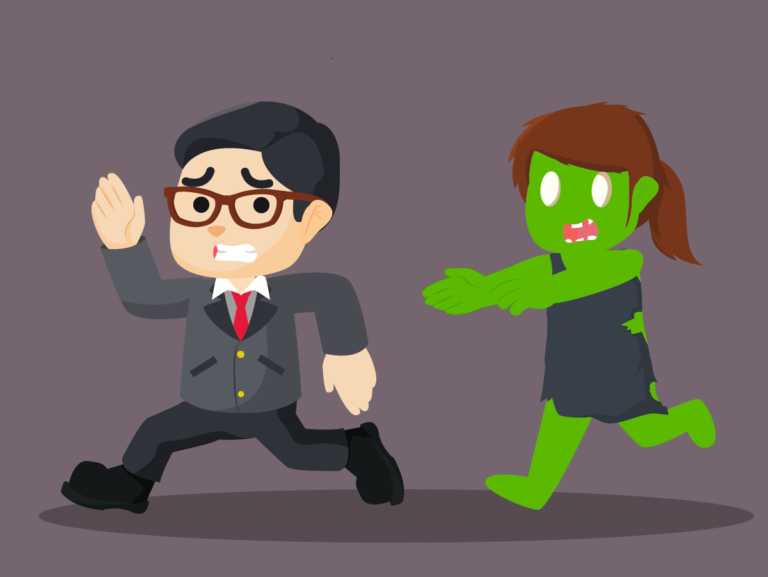Your interview process should be designed to give you all the objective information you need to make the best decision possible about your potential candidates and new hires. Unfortunately, this is where a lot of businesses screw up. They drop the ball on the interview process once they have a good volume of top candidates! Don’t do the same. Once you have your list of candidates, your process needs to be effective and efficient.
Here are the critical elements to conducting winning interviews and successfully closing in the offer stage.
The Three-Step Interview
The steps you include in your interview process should balance three things:
- Efficiency
- A good candidate experience
- Great information to base a hiring decision on
For many businesses, that leads to layering on step after step after step, which makes candidates walk away nine times out of ten. They lose good hires because the process took too long.
That’s why we’re firm believers in a three-stage interview process.
As long as you enter your interviews prepared and with defined goals you want to achieve with each interview stage, you will close on the right candidates effectively and efficiently by the end of the third step.
Step One — Achievements
The first stage of your interview process is dedicated to figuring out what your candidate has achieved as an individual in the context of their former employment.
Here’s what we mean.
It is easy for businesses to get caught up in what we call the “We Trap.” Too often, talent will respond to questions about past work with things like, “We did XYZ and achieved these results.” While teamwork is excellent, it tells you nothing about that person as an individual. Get stuck in the “You Trap” instead. Ask them questions like:
- How did you contribute to the task at hand?
- How did you solve the problems you encountered in your most recent project?
- What specific tools did you use to achieve those results?
- Looking back, what could you have done differently on this account?
You’re looking for their personal achievements, not their team’s. Reframing from “we” to “you” helps you understand your candidate’s capabilities in the context of work.
Timing
At stage one, you can expect an interview to take around 30-60 minutes. That’s more than enough time for a good, albeit structured, conversation that feels like an excellent experience for your candidate but still gives you the objective outcomes you’re after. It needs to be efficient. This next part is crucial. If, within the first 10 minutes, you know that person isn’t a good fit, do everyone a favor. End the interview and tell them why. End it early, end it often, but be objective. Don’t waste anyone’s time.
Step Two — Technical Competence
Let’s face it. You should know whether or not your candidate has the technical skills they need to fulfill the role you’re hiring for. Yes, they need to fit the company (more on that in step three!), and yes, you can train certain skills, but the right candidate will likely possess both culture fit and technical skills.
Many organizations do technical assessments or job-specific functional activities to assess their top picks. We’re big fans of this. What a lot of organizations don’t do, however, is compensate for these assessments and their time. Here’s why paying candidates for these assessments is key:
- It helps you stand out.
- Knowing that pushing candidates to the following round costs the company, you’ll be more selective and objective about who proceeds.
- You better prepare yourself for the first interview and set thorough goals.
- Paying for time means you can ask potential hires how long it took to complete the task — this gives you a better understanding of their work efficiency and speed.
You don’t have to compensate for technical assessments, but the sheer amount of value it provides in capability perspective, knowledge perspective, and candidate experience perspective is massive — Your business will always come out on top.
Step Three — Culture Fit
A lot of companies bring in different parties throughout the interview process, and different lenses are essential. They also slow the process down. That’s why we suggest bringing in people from other departments or the candidate’s future teammates at the third stage of the process. You’ll get the opportunity to ensure your candidate is the right fit for your business culture-wise while reducing the drop-off due to a lengthy interview process.
Final Interview Tips
Besides setting goals and creating an efficient interview process, there are a few other highly recommended tips:
- At the front end, tell potential hires precisely what the steps are and what’s involved. No surprises.
- Discuss pay early and often to set expectations.
Having your candidates know what to expect (and what the next steps involve if they make it) will eliminate unnecessary questions and keep them in for the duration of the process.
A Successful Offer
Once you’ve made it through the above process and have landed on the one for your team, it’s easy to want to put an offer in an email and send it over immediately.
Don’t!
It’s not quite the time. To close effectively, there’s one more step to take (alongside these offer stage essentials)— a pre-closing conversation.
Get your chosen candidate on the phone or over video — don’t worry about getting them in the office. This isn’t a sealed deal (yet!), and bringing them in adds a lot of extra and unnecessary effort.
The pre-closing conversation is designed to ensure both you and the candidate know what the offer would look like and why. Use this conversation to determine if their opinion has changed since the interview process, and reaffirm the wage you’re willing to offer (and they’re ready to accept). The wage piece is why discussing money throughout the interview process is so important.
If they said they’re interested in an $80-100K range, and you plan to offer $90k, let them know, and let them know why. Writing up an offer with a mid-range salary and no explanation is a recipe for receiving a “No.” This is your opportunity to let them know what parts of their interview and assessment meant they’re only currently worth $90k to your company. It’s also a window of opportunity for you to let them know that you’re invested in their development and how you plan to help them grow into that upper-level wage at your company. If they’re going to reject you over a $5,000 annual difference, it’s likely they aren’t the right fit anyway.
Once you’re confident they’ll say yes to your offer, the paperwork is just a formality. Send it along quickly (not a week later!) and give them a deadline for signing. Three days to a week is normal. Anything shorter, and you’re giving them a whole lot of red flags and reasons to back out.
Once it’s signed, congratulations are in order! There’s just one last step.
Smooth Onboarding
Your new hire’s first day carries a lot of weight. It is your opportunity to make an excellent first impression — and first impressions matter. That’s where exceptional onboarding becomes crucial. Take care of the little things, like having the hiring manager reach out before they arrive with a note saying they’re excited to have them on the team (and why). Get their technical setup ready early so it’s waiting for them on day one. Make sure the entire process is smooth, simple, and enjoyable.
At the end of the first week, you need to have one more conversation. Have a 1-on-1 conversation with your new hire to see how the week went. Here’s the catch, though. When they give you feedback, listen. Growing pains are normal, but if there are systematic changes you need to make in terms of onboarding organization, make them! Don’t worry about things you can’t control, but if there’s a way to improve your candidate and team experience, do it.
A three-step interview process that is goal-oriented and efficient will be your business’s ultimate weapon. Pair it with a pre-offer conversation and smooth onboarding process, and you’ll both attract, hire, and retain the top talent and best culture fit for your growing business.
Stuck on Where to Begin?
Overhauling your hiring practices and establishing new processes to ensure you’ve optimized everything can take time and energy. It’s a tough ask when you’re also trying to run and grow your business! We’re experts in helping businesses of all sizes understand how to hire, who they want to hire, and then making it happen as efficiently and effectively as possible. Just being here and reading our blog is a great first step. If you’re looking for a bit more help or don’t have the capacity to do it on your own, we’d be happy to help. Reach out to us today to get started.








